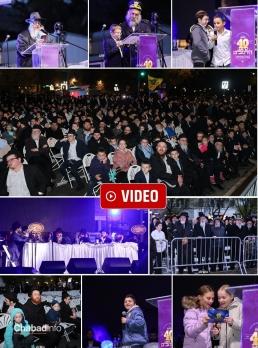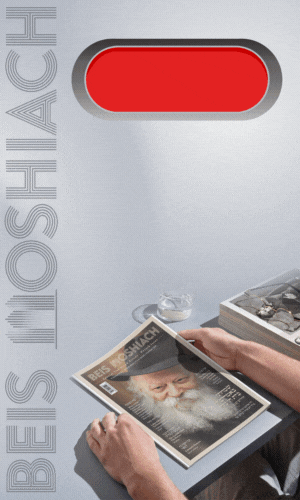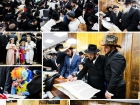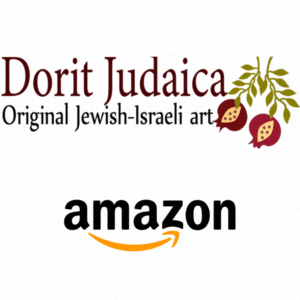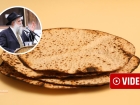Preventing The Demolition of Chabad Shul
Times of Israel chronicles the legal dispute that has locked the doors of Chevra Anshei Lubawitz since the 112-year-old building was purchased for $3.1 million to be demolished for a six-story condo • Full Story
NEW YORK — Without a historic landmark designation, Borough Park’s first and oldest surviving synagogue could end up as dust and rubble — and that would break David Shor’s heart.
First drawn to Chevra Anshei Lubawitz 12 years ago for its openness, Shor, who has become well versed in the synagogue’s history, now appreciates its role in the neighborhood and city.
“It is a historic synagogue and I want it to be preserved. There is nothing that would make us happier than to be able to go back inside and worship. We yearn for that day,” Shor told The Times of Israel.
The synagogue’s front doors were locked in January 2018 as a result of a legal dispute dating back to May 2017. At the time, a developer purchased the building and property for $3.1 million. According to court records, the developer planned to demolish the building and build a six-story condominium building with a new synagogue on the first floor and basement.
It turned out that several synagogue members, Shor included, thought the deal wasn’t kosher. So they sued to stop the demolition, saying they didn’t learn of the sale until days after it occurred.
According to the plaintiffs, board members told the court that the final vote received unanimous support from all 15 participants in the original meeting, out of the synagogue’s total membership of 19.
Shor claimed that the synagogue has an estimated 50 members, and that they were not informed about the vote.
Additionally, the plaintiffs said two unnamed board members who pushed for the deal didn’t pursue other offers, or even put the synagogue on the open market. In November 2017 a Brooklyn judge issued a court injunction against the sale and demolition. The order remains in effect until October 2019.
Now, with the deadline on the not-so-distant horizon, members and supporters of the 112-year-old synagogue are seeking another avenue for protection: the New York City Landmark Preservation Commission. An application for landmark status was filed in early March. The designation would not only preserve the building itself — it would preserve the synagogue as a symbol of Jewish life in the borough, the city, and the nation as a whole, according to petitioners.
“What we know of the Jewish community in Borough Park today, and its vast infrastructure, started with the construction of this building,” said Rabbi Yaacov Behrman, a community activist affiliated with Chabad.
Behrman is handling the landmark application on behalf of the applicants.
Before it was Chevra Anshei Lubawitz, the building belonged to Temple Beth-El. A congregation of Eastern-European origin, the cornerstone for Beth-El was laid in 1906 and the building was inaugurated in 1907 — a time when Borough Park was getting established as a center for Jewish life, according to Anthony W. Robins, who researched the synagogue’s architectural and cultural history for the landmark report.
Eight years prior to the synagogue’s establishment, Jewish families couldn’t buy property in Brooklyn. Today 420,000 of New York City’s 1.3 million Jews live in the borough.
Followers of the Chabad Lubavitch movement purchased the building in 1922, according to Shor and Berhman. However, some congregants questioned both the move to get landmark designation and Chabad’s connection to the synagogue.
“They are just using a different legal strategy to stop a new building. It’s not sincere. It has no historic value and no architectural significance. Chabad was never part of this shul; no Chabad [leader] ever visited. If it was, Chabad would have tried to get it landmarked years ago,” said Asher Gluck, a synagogue board member.
“The current shul board are there since 1978 and served this shul and gave their lives away for over 25 years, throughout the years they worked tirelessly together with the Shul members to glorify and maintain our shul,” said Gluck.
Scott Mollen, the attorney representing the synagogue’s leadership behind the sale, declined to comment on the case.
But Gluck said a new synagogue would reinvigorate the congregation and neighborhood. It could stay open 24 hours a day, and aside from the sanctuary there would be a ritual bath, a library, and a space where relics from the existing synagogue would be displayed, he said.
In the recent past, said Gluck, the synagogue “couldn’t even get a minyan to pray,” Gluck said, referring to the required prayer quorum of 10 Jewish men.
Gluck said the only option is to raze the current synagogue, which he said is in a terrible state of disrepair. Aside from a sagging roof and outdoor staircase, there’s a mold and asbestos problem. The walls and exterior plaster are crumbling.
“Since this structure was built in 1906 it has been renovated many times throughout the years. It is now in a very dilapidated and dangerous condition. There are mold, lead paint, asbestos and other hazardous conditions within the building,” said Gluck.
“The community wishes to have this old structure demolished and get a new beautiful, spacious 10,000 square feet synagogue with a mikveh in its place which would be a warm and inviting place of worship, instead of continuing in an old building into which the synagogue can no longer maintain,” said Gluck.
But according to a building inspection report shared with The Times of Israel, the building is in fair structural condition, mostly in need of waterproofing work to correct water damaged areas. The chimney, a cracked foundation wall and boiler room ceiling are the only structural repairs needed. The report also contradicted the suggestion that the building is a hazard. It said the interior, especially the sanctuary with its ceiling painted to look the sky, has been maintained and renovated.
Regardless, Gluck is hopeful that a new synagogue will rise in the place of Chevra Anshei. And if it does, the congregation will be just as welcoming as the current one, he said.
“It would still have an open door policy. It would welcome Hasidim, Sephardi, Ashkenazi and secular Jews. Nobody judges here,” he said.
As for Gluck’s assertion that Chabad Lubavitch has no ties to the synagogue, Behrman refuted this claim.
He pointed to numerous happenings that demonstrate Chabad’s connection, including a letter from the sixth Lubavitcher grand rabbi, Yosef Yitzchak Schneersohn, to the congregation from Riga in 1928. The rabbi addressed the congregation in a unique manner reserved for members of the Chabad community, Berhman said.
Additionally, the congregation has a letter of support from the director and curator of the Central Chabad-Lubavitch Research Library, and Chabad historian, Rabbi Shalom DovBer Levine.
“The congregation has had strong ties to the movement since its founding, including correspondence with the movement’s leaders while they were still located in pre-World War II Eastern Europe,” Levine said.
“The synagogue has had the name ‘Lubavitch’ for 100-plus years,” said Behrman. “To say there is no link to Chabad is a ridiculous argument to make.”
It is because of the synagogue’s place in the borough that members filed for landmark status in early March.
If it succeeds it will become the second landmarked synagogue in Brooklyn. Magen David Synagogue in Bensonhurst is currently the lone landmarked synagogue in the borough. In Queens, Congregation Tifereth Israel Anshei Corona is the only such designated synagogue. The majority of landmarked synagogues are in Manhattan.
Having spent a great deal of time in the Jewish community, Public Advocate Jumaane Williams also wrote a letter in support of the synagogue. Conferring landmark status on the synagogue both recognizes the synagogue’s role in shaping Borough Park and the vital contributions the Jewish community has made to the city, he wrote.
So far more than 30 people and agencies, including the Brooklyn Asian Safety Patrol and the Bangladeshi American friendship Society in North America, have sent letters to the landmark commission supporting Chevra Anshei.
In another letter of support, Carlos Menchaca — the councilman for New York’s 38th District, which includes Borough Park — urged the commission to designate the synagogue a landmark in part because it “features unique architectural qualities that reflect the time, place, and community in which it was built.”
The synagogue’s style is characteristic of the “tenement synagogues,” most often seen in the Lower East Side. Built to fit in between tenement buildings, these synagogues are narrow in width and have Moorish influences, a nod to the Eastern origins of Jews, according to Robins’s report.
Unlike the more imposing landmark synagogues in Manhattan, Chevra Anshei Lubawitz is rather unassuming. Its style reflects its original role: to be a synagogue for and of the neighborhood.
Born and raised in Brooklyn, Pearl Pardes Fleishman recalled how as president of the congregation, her father, Samuel H. Pardes, supported the synagogue through the depression and the war years. She wrote how the synagogue served as a religious and community center for often poor, struggling and refugee Jews.
“Who would think that an old and beautiful place of worship, sustained for so many years, by the sacrifice of so many through such difficult times would now be the object of a land grab?” she asked. “Where is the reverence for a landmark of such importance?”
362
Join ChabadInfo's News Roundup and alerts for the HOTTEST Chabad news and updates!















